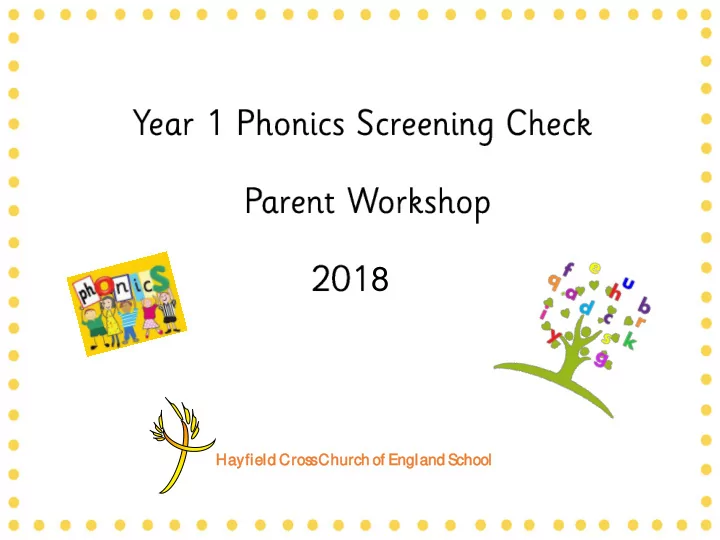

8 Hayfi field eld Cross Churc rch h of Englan and d Scho hool ol
:
• • •
• • •
Phase 1 Phase 2 Phase 3 Phase 4 Phase 5 Phase 6
• • • • •
Phase 4 The purpose of this phase is to consolidate the sounds already taught in previous phases. Children are also exposed to adjacent consonants (consonant blends and consonant clusters) and multisyllabic words. Useful Tip It is important children learn to read words without blending as soon as possible. Children progress from blending out loud, to blending in their head before reading on sight. The sooner they can read on sight, the quicker their fluency will improve.
Phase 4 CVCC and CCVC Words Blends and clusters such as the following are taught: ‘nt’ as in tent ‘st’ as in toast ‘pl’ as in plum ‘sp’ as in spoon Tricky Words During this phase, the children will also be exposed to tricky words; words that cannot be sounded out. said so do have like some come were there little one when out what
Phase 4 Ways You Can Support Your Child at Home Using the sounds the children have been exposed to, the following games and activities can be done. Continue to use flashcards with the sounds already taught. Practise sounding out a range of CVCC and CCVC words. Ask your child to make a word using magnetic letters or to write it down.
New Graphemes for Reading: ay ou ie ea oy ir ue aw wh ph ew oe au a- e e- e i- e o- e u- e
Phase 5 Useful Tip Split digraphs are introduced in Phase 5. a-e e-e i-e o-e u-e Children will learn that the ‘e’ on the end causes the initial vowel to make the longer vowel sound rather than the shorter one. E.g. ay ee igh ow oo Tricky Words During this phase, the children will also be exposed to tricky words; words that cannot be sounded out. oh people Mr called looked could asked their
Phase 5 Ways You Can Support Your Child at Home Using the sounds the children have been exposed to, the following games and activities can be done. Ask your child to make or spell words. Support them whilst they figure out how the sound needs to be represented. Focus on split digraphs using flashcards, try to increase the speed you show children. Encourage children to write as many sounds/ words as possible in a set amount of time. Expose children to a wider range of stories which include longer texts.
• • • • • •
• Make up nonsense words using the sounds already taught. E.g. vaib • Ensure your child decodes these words out loud for accuracy • In the screening check, pseudo words will have a picture or an alien alongside to remind the children they are a nonsense word.
c l a p ch a t
Recommend
More recommend